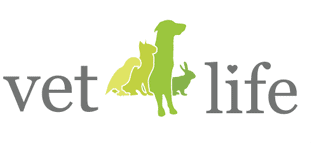The Apple, or Cherry, of my Eye
The eye is a fascinating organ - so much packed into a small globe and performing such an important task, particularly in our keen sighted four-legged friends.
You may be surprised to know that dogs and cats have a third eyelid. It is a vital part of their eyes which produces ⅓ of their tears! It also acts by swiping over the eye, pushing away any debris which can accumulate.
A condition in dogs which can occur is “Cherry Eye” or nictitating membrane prolapse where the third eyelid flips outwards. This is something which may happen temporarily and revert back to normal, or stay reversed permanently. If it prolapses enough to stay reversed permanently, surgery may be the best option to try and help reduce the problem. If it goes untreated, it can lead to permanent damage from the eye being dry and not wiped of debris.
Dexter's story
Dexter is a 5 month old English Bulldog Terrier who was adopted by his owners in March 2020. The breeder had disclosed that the Cherry Eye had appeared 2 days before the owners went to pick him up. When he was picked up, he was brought straight to us and examined by one of our lovely vets Steph. In himself, he was a strong and gorgeous puppy but one of his eyes was affected with severe Cherry Eye. The following day, the owners called back to say it had affected the other eye. Importantly, this isn’t an infectious condition. It is a defect passed down to offspring and predisposed in breeds such as French Bulldogs, British Bulldogs, Beagles, Great Danes, Cocker Spaniels and Shar Peis.
2 days after presenting, he was prepared for surgery with our clinical director Vanessa who performed a gland replacement by creating an envelope on the surface of the third eyelid. This alters its shape, allowing it to fall back down naturally to the position it should be at.
Before and after the procedure, we always check for any corneal ulcers; these are any irregularities on the smooth outer layer of the eye. We do this by applying a dye to the eye: fluorescein. As a forewarning, it may come out of your pet’s nose but is completely harmless, it may just give a slightly alien glow to the eyes and ears! If there are ulcers present, we have to ensure they heal as quickly as possible because any deteriorations can lead to removal of the eye in the worst case scenarios and you can’t leave them to heal by themselves without the appropriate drops. Even with drops, they can sometimes take 2 weeks to fully heal. This is something we found with Dexter after his surgery. His patience knew no bounds as we had to apply both an antibiotic and lubricating drop in both eyes four times daily. It may seem excessive and a commitment but is absolutely essential to ensure the long term health of the eyes. 2 weeks later for Dexter, the swelling was nearly all gone and the ulcers were resolved which was excellent news for this little trooper. His owners are very happy with the outcome!
Important information we always convey is that surgical treatment of this issue is advised if severe. Unfortunately, this condition is stubborn to treat and there is always the possibility it can recur despite surgical treatment. So going forwards, it’s about monitoring.
Lastly, we would always advise creating a strong relationship with a breeder and visiting any puppies you intend on purchasing. Using the Kennel Club Breeding List is a good place to start but doesn’t always guarantee therefore, always visit any puppy!


